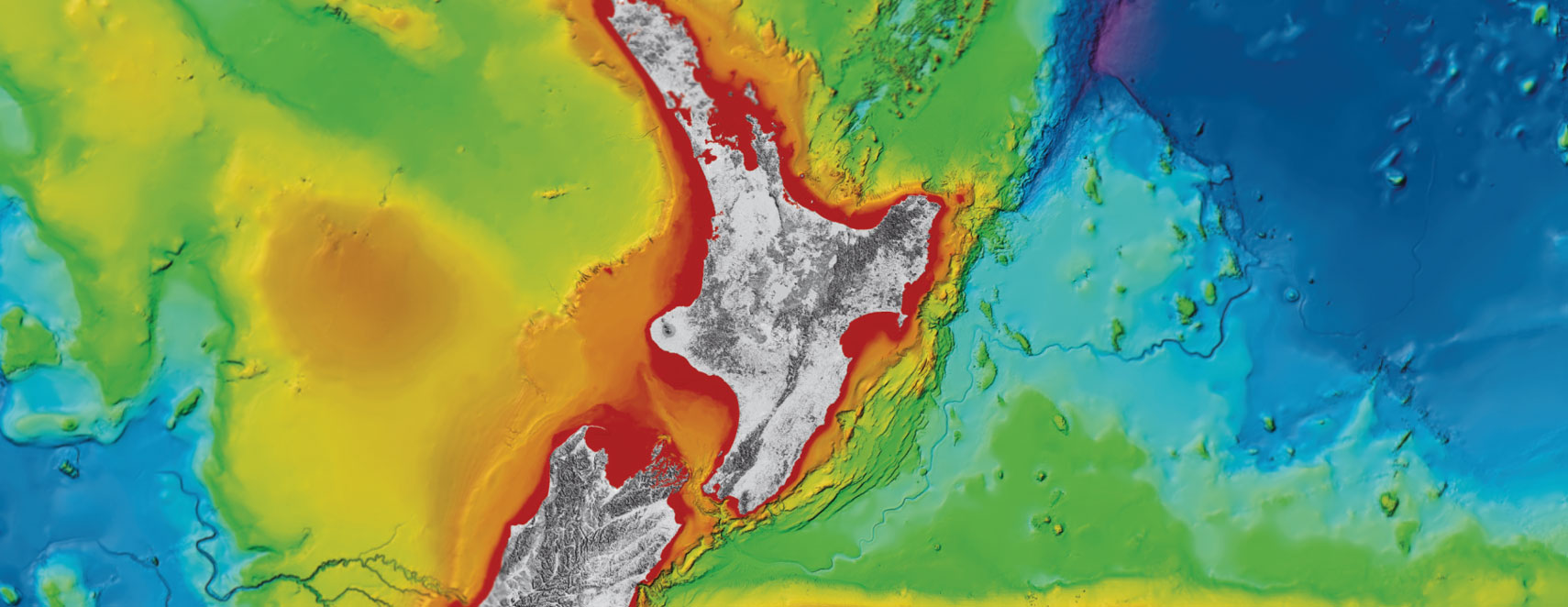
Tapping into New Zealand’s sleeping giant

Stretching down the length of the North Island’s east coast lies a sleeping geological giant - the Hikurangi subduction zone. It is New Zealand’s largest and most active plate boundary, where the Pacific Plate subducts beneath the Australian Plate, giving rise to large earthquakes and tsunamis.
The northern part of the Hikurangi subduction zone also hosts the Earth’s best documented shallow slow-slip earthquakes. Known as ‘silent’ earthquakes, they last for days to weeks at a time, moving faults at a snail’s pace without ever being felt on the surface.
A scientific drilling expedition on the research ship JOIDES Resolution has just returned from a two-month mission to study the rumblings of this sub-seafloor giant, during which sensors were installed in two boreholes beneath the ocean floor to monitor slow-slip events and earthquakes. The expedition also collected more than 1 kilometre of sediment and rock cores from below the seafloor at four locations across the subduction zone.
Two drill sites were on a section of the plate boundary that is not subducted yet, including the top of a seamount (an extinct underwater volcano). Cores were also collected from inside one of the major faults accommodating the motion of the tectonic plates, and from the sediments directly above the area where the largest slow-slip occurs.
Study of these samples in the coming years will reveal how the sediment and rocks behave once they are subjected to the forces of the megathrust zone, shedding light on the mystery of why slow-slip events occur.
Dr Laura Wallace, expedition co-leader, explained “slow-slip earthquakes at subduction zones in New Zealand and around the world are perplexing because we don’t understand what causes them. This voyage has given us our very first look at the material in the subduction zone and will help to tell us why faults behave in such a way.
“Understanding the relationship between slow-slip events and large earthquakes is also a major aim of these studies and is very important for New Zealand’s hazard preparedness,” said Dr Wallace.
In a first for New Zealand, two sub-seafloor observatories were installed at the slow-slip fault region. The ‘quake labs’ will collect temperature, pressure and chemical data for up to five years, recording changes as earthquakes and slow-slip events occur. The data will be collected in the future by a ship with a submersible ROV (remotely operated vehicle).
Expedition co-leader, Dr Demian Saffer of The Pennsylvania State University explained “these technically complex observatories are two of only a handful of observatories at subduction zones in the world.
“The observatories allow detection of even the smallest movements on the subduction fault, and will yield unparalleled insight into what happens during slow-slip earthquakes. Installing these probes is also an incredibly challenging scientific and engineering feat, so we were thrilled to accomplish it on our expedition.”
The expedition involved approximately $NZ30 million of international investment, funded by the United States National Science Foundation and the International Ocean Discovery Program. The expedition involved 30 geoscientists from New Zealand, the United States, Europe, Japan, China, South Korea, and Brazil.
New Zealand participation is supported by the Australian and New Zealand IODP Consortium, which is funded by the Australian Government through the Australian Research Council’s LIEF funding scheme and an Australian and New Zealand consortium of universities and government agencies.
Disclaimers and Copyright
While every endeavour has been taken by the East Coast Lab Hikurangi Subduction Zone M9 to ensure that the information on this website is
accurate and up to date, East Coast Lab Hikurangi Subduction Zone M9 shall not be liable for any loss suffered through the use, directly or indirectly, of information on this website. Information contained has been assembled in good faith.
Some of the information available in this site is from the New Zealand Public domain and supplied by relevant
government agencies. East Coast Lab Hikurangi Subduction Zone M9 cannot accept any liability for its accuracy or content.
Portions of the information and material on this site, including data, pages, documents, online
graphics and images are protected by copyright, unless specifically notified to the contrary. Externally sourced
information or material is copyright to the respective provider.
© East Coast Lab Hikurangi Subduction Zone M9 - www.eastcoastlab.org.nz / +64 6 835 9200 / info@eastcoastlab.org.nz
